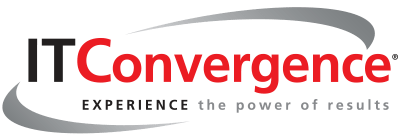When you think about agility and scalability, it’s natural to also consider the cost management implications that affect a business landscape. As such, cloud computing has become a fundamental enabler of innovation, agility, and scalability.
Organizations of all sizes are increasingly migrating their workloads to the cloud to take advantage of its benefits. However, with this rapid adoption comes a new set of challenges, controlling and managing cloud costs effectively. For businesses aiming to maximize return on investment (ROI), it is essential to have a well-defined cloud cost management strategy that not only optimizes spending but also aligns cloud usage with business goals.
This article explores the importance of cloud cost management, discusses strategies and best practices for maximizing ROI, and highlights the benefits of leveraging cloud managed services. We will provide practical insights to help organizations gain control over cloud costs and achieve maximum value from their cloud investments.
Why Cloud Cost Management Matters
Cloud cost management is the process of monitoring, optimizing, and controlling the costs associated with cloud services. As businesses continue to expand their cloud usage, cloud spending can quickly spiral out of control without proper governance. According to a report by Flexera, wasted cloud spend is estimated to be around 30% of an organization’s total cloud bill.
The goal of cloud cost management is to ensure that organizations only pay for the resources they need while maximizing the performance and efficiency of their cloud environment. Without a well-thought-out strategy, cloud expenses can escalate, resulting in lower ROI and diminishing the benefits of cloud adoption.
Understanding Cloud Cost Drivers
Before diving into cost optimization strategies, it is important to understand the primary cost drivers of cloud environments. These cost drivers include:
- Compute Costs: Costs related to virtual machines (VMs), containers, and other compute resources used to run applications.
- Storage Costs: Costs associated with storing data in the cloud, including object storage (e.g., Amazon S3) and block storage (e.g., Azure Managed Disks).
- Data Transfer Costs: Costs incurred from data being transferred between different cloud services or regions, which can significantly impact the overall cloud bill.
- Licensing and Subscription Costs: Costs related to software licenses, SaaS subscriptions, and other managed services offered by cloud providers.
- Idle and Unused Resources: Costs incurred from resources that are provisioned but not used effectively, such as idle VMs or unused storage volumes.
To effectively manage cloud costs, organizations need to gain visibility into these cost drivers and implement strategies to control and optimize their spending.
Maximizing ROI through Cloud Cost Management Optimization Strategies
Maximizing ROI from cloud investments requires a proactive approach to managing and optimizing cloud costs. Below are some of the key strategies and best practices that can help organizations achieve this goal.
1. Implement Cloud Cost Visibility and Monitoring
The first step in cloud cost management is gaining visibility into cloud spending. Organizations need to have a comprehensive view of how cloud resources are being used and where costs are being incurred. This can be achieved through tools and practices such as:
- Cloud Cost Management Tools: Utilize cloud-native tools like AWS Cost Explorer, Azure Cost Management, and Google Cloud’s Cost Management to track and analyze cloud spending. These tools provide detailed insights into resource usage, spending patterns, and opportunities for cost optimization.
- Third-Party Cost Management Platforms: Platforms like CloudHealth by VMware and CloudCheckr offer advanced features for monitoring, analyzing, and optimizing cloud costs across multiple cloud providers.
- Tagging and Resource Classification: Implement a tagging strategy to categorize cloud resources by department, project, or environment. This helps track spending by business units and identify areas where costs can be optimized.
2. Right-Sizing Cloud Resources
Right-sizing involves matching cloud resources with the actual demand to eliminate overprovisioning and underutilization. This is one of the most effective ways to control cloud costs and maximize ROI.
- Evaluate Usage Patterns: Regularly evaluate usage patterns to identify resources that are underutilized or overprovisioned. For example, virtual machines running at low utilization can be downsized to save costs.
- Auto-Scaling: Use auto-scaling features provided by cloud platforms to automatically adjust the number of compute resources based on demand. This ensures that you are not paying for idle capacity while still meeting application performance requirements during peak usage.
- Reserved Instances and Savings Plans: Consider purchasing Reserved Instances (RIs) or Savings Plans to save on compute costs. RIs offer significant discounts for committing to a specific instance type for a fixed term, while Savings Plans provide more flexibility in terms of resource usage.
3. Automate Cloud Cost Management with Managed Services
Cloud managed services play a crucial role in streamlining cloud cost management and maximizing ROI. Managed service providers (MSPs) offer specialized expertise to manage cloud environments efficiently and implement cost-saving measures.
- Cost Optimization Automation: Managed services can automate many aspects of cloud cost management, such as shutting down idle resources, optimizing compute instances, and rightsizing storage. By automating these tasks, organizations can save significant time and avoid the risk of human error.
- Cloud Governance and Compliance: MSPs help enforce cloud governance policies, ensuring that cloud usage adheres to predefined budgets and complies with security standards. This prevents unexpected costs resulting from unauthorized resource usage.
- Proactive Cost Alerts and Budget Tracking: Managed service providers can set up cost alerts and budget tracking mechanisms to notify stakeholders when spending reaches certain thresholds. This allows organizations to act quickly to prevent overspending and ensure that they stay within budget.
4. Leverage Multi-Cloud and Hybrid Cloud Strategies
A multi-cloud or hybrid cloud strategy can also help organizations optimize cloud costs and maximize ROI. By leveraging multiple cloud providers, organizations can choose the most cost-effective services for specific workloads.
- Avoid Vendor Lock-In: Using multiple cloud providers reduces the risk of vendor lock-in and allows organizations to take advantage of cost-competitive services offered by different cloud platforms.
- Optimize Workload Placement: Different cloud providers have different pricing models, and organizations can optimize costs by placing workloads in the cloud environment that offers the best pricing for specific services. For example, a high-performance computing workload might be more cost-effective on AWS, while a storage-heavy workload could benefit from Google Cloud’s pricing.
5. Utilize Spot Instances for Cost Savings
Cloud providers like AWS, Azure, and Google Cloud offer spot instances or preemptible VMs at significantly reduced prices compared to on-demand instances. Spot instances are ideal for workloads that can tolerate interruptions, such as batch processing or testing environments.
- Cost Savings Potential: Spot instances can provide cost savings of up to 90% compared to on-demand instances. However, they come with the caveat that they can be terminated by the cloud provider if capacity is needed for other customers.
- Use Cases for Spot Instances: Non-critical workloads, data processing, and CI/CD pipelines are excellent candidates for spot instances, helping organizations save costs while maintaining flexibility.
6. Adopt Automation and AI for Cloud Cost Management
Automation and AI can be used to enhance cloud cost management by providing intelligent insights and automating routine tasks.
- Automated Scheduling: Use automated scheduling to shut down non-critical resources during off-hours. For example, development and testing environments can be automatically turned off at night or during weekends to save costs.
- AI-Driven Insights: Tools like AWS Trusted Advisor and Azure Advisor use AI to provide actionable recommendations for cost optimization, including resource optimization, purchasing RIs, and improving operational efficiency.
7. Optimize Storage and Data Transfer Costs
Storage and data transfer are often overlooked cost drivers that can have a significant impact on the overall cloud bill. To maximize ROI, organizations need to implement strategies to optimize these costs.
- Data Lifecycle Policies: Implement data lifecycle management policies to automatically transition infrequently accessed data to lower-cost storage tiers, such as AWS Glacier or Azure Archive Storage.
- Minimize Data Transfer Costs: Data transfer between regions or cloud providers can be costly. To minimize data transfer costs, organizations should consider consolidating workloads within the same region and avoid unnecessary cross-region transfers.
- Delete Unused Snapshots and Backups: Regularly review and delete unused snapshots and backups that are no longer required. This can help reduce unnecessary storage costs.
The Role of Cloud Managed Services in Cloud Cost Management
Cloud managed services provide an effective way to maximize ROI by ensuring that cloud environments are optimized, secure, and cost-efficient. Managed service providers offer the expertise and tools needed to address the complexities of cloud cost management, allowing organizations to focus on their core business objectives.
Benefits of Cloud Managed Services
- Expertise and Experience: Managed service providers have specialized expertise in managing complex cloud environments. They are familiar with best practices and have access to tools that can help optimize cloud costs and maximize efficiency.
- End-to-End Cost Management: MSPs provide end-to-end management of cloud costs, from monitoring and optimization to billing and reporting. This comprehensive approach ensures that organizations have complete visibility and control over their cloud spending.
- Scalability and Flexibility: Managed services provide the scalability and flexibility needed to support dynamic business needs. By leveraging cloud managed services, organizations can easily scale their cloud infrastructure up or down as needed, without worrying about the complexities of managing cloud resources.
- Focus on Innovation: With managed services taking care of cloud infrastructure and cost management, organizations can focus on driving innovation and achieving their strategic goals. This shift in focus helps maximize the ROI from both cloud and managed services investments.
Achieving Maximum ROI with Effective Cloud Cost Management
Cloud cost management is a critical component of maximizing ROI from cloud investments. As cloud adoption continues to grow, businesses need to be proactive in managing and optimizing cloud costs to avoid waste and ensure that their cloud spending aligns with business goals.
By implementing strategies such as cloud cost visibility, right-sizing resources, leveraging spot instances, and adopting automation, organizations can achieve significant cost savings. Moreover, cloud managed services provide the expertise, automation, and governance needed to ensure that cloud environments are optimized for both performance and cost efficiency.
Effective cloud cost management is essential for maintaining a competitive edge and driving value from cloud investments. Organizations that adopt a proactive approach to managing cloud costs will be well-positioned to maximize their ROI, achieve operational efficiency, and unlock the full potential of the cloud.




